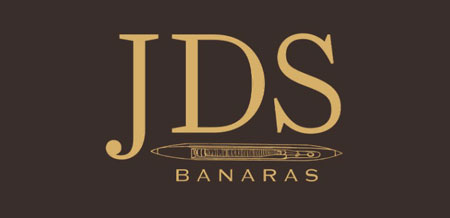In the long line of fashion evolution, we have been discussing globalization a lot of late. In the present and in the immediate past, or the contemporary, we know of Indian designers who have presented Indian fashion and won hearts. Older to that was the time when colonization happened in the world and while Indian prints went to Europe along with the cotton and silk and then faced ruin in the hands of industrialization, and we added the underskirts to add volume to our sarees and reduce the transparency, or the inflow of the Parisian chiffon to our every day fashion finesse move for official attires and summer party looks. The oldest was owing to the trade routes, where for instance the Chinese silk and motifs found their grounds in Indian tastes. This was a descending order, where we vaguely talked about the world fashion vis-à-vis the Indian fashion scenario. Today, however, JDS Banaras would like to shortly discuss how fashion has had an interwoven tradition even within the Indian subcontinent and more specifically, how the Uppada Banarasi is a true testimony of how Banarasi has had a history longer than we know of. In this blog, let us understand how Uppada Banarasi reflects how East meets North.
Let us quickly insert that East of India meets the North of India is the geography we would talk about.
Uppada: A short introduction
In one of our blogs we delved deeply into how Banarasi has imbibed the patterns, fabrics, and styles from various places and is a result of beautiful amalgamation. If you have not already read that piece about Banarasi saree history, here is the link for it.
Banarasi sarees have a rich history. The silks came from China and from there came the dragon and other motifs. When the silk travelled to Persian lands, we received the rich zardozi work in metal threads. The Euro-Persian travel of silk brought to us the rich floral and fleur de lys kind of patters, and this is where we would briefly halt. Uppada weave has a rich burst of floral motifs all over it and metal threadwork helps to frame these patterns and make them shine on a silken yard.
Do you wish to know where the Eastern Indian influence steps in as per the aforementioned context?
The answer lies in one word Jamdani.

Jamdani: the Eastern Indian contributor to Uppada
Of late, Jamdani sarees have made a comeback after being favored less over the flowy fabrics, even by the Bengalis. However, owning a handwoven Jamdani is a statement of class and taste for the Bengali women.
Jamdani is a famous stiffer cotton weave that owes the origin in the now Bengal-Bangladesh region. The word jam+dani makes it Jamdani, where jam stands for flowers or floral, and dani stands for vase or the vessel to hold flowers in. A self-explanatory name, these sarees would use the floral and pot-like motifs throughout the body with geometrical precision. However, as the pattern traveled south, the cotton was traded in for silk and the Andhra Pradesh should be thanked for this wonderful replacement.
Uppada Banarasi silk: A contribution of the North
It was Banarasi however, where the Uppada silk became more gorgeous. The silken shine and shimmer retained the weight of the craft enriched past, but unlike the silken threads of the Uppada from South, the Banarasi artisans adopted the existing and amplified the bouquet like motifs in zardozi treatment by using shiny and royal metal threads. This made the Eastern Indian Jamdani become a more royal and regal and one could declare it to be fit for the elite. The silk banarasi weave is usually done in the katan silk so that the sarees are flowy yet opulent in a stately manner. These uppada banarasi silks adopted the richness of the banarasis and became one of the most popular choices with fewer people knowing about the origins.
As the Northern touch added to itself, the Persian motifs and metal threadwork had another additions, that of meenakari. Hints of colourful enamelwork was reflected using the colourful silken threads, injected very thoughtfully and meticulously into the floral motifs. The addition was so elaborate and controlled that it broke the silk and metal monotony without drifting afar.
Uppada Banarasi silk saree: Bride’s best friend
Brides who love katan silks and thread work with an adequate, yet, subtle hints of color splashes in their wedding ensemble, they can happily pick a dark red, maroon Uppada Banarasi silk saree and with minimal gold jewelry be the show stealer.
The floral jaal body, simpler yet ornate borders and pallu invite a lot of styling thoughts and ideas without becoming overwhelming and these sarees are a treasure for anyone who considers reusing such exquisite pieces on special occasions.
Final Address:
Sarees are very historical, and some day, we will delve into more weaves and patterns, but for today, we decided to give a short glimpse of our own Uppada Banarasi, a variety where the Indo-Persian influence helped a unique and regal evolution where cotton paved way to silk, metal threadwork made an advent over cotton and silk threads, and patterns arranged to make us realize how well we all can co-exist and create harmony. If you or any of the women you know owns a Uppada Banarasi saree, we would like you to see it, touch it, and visit JDS Banaras, the best Banarasi saree shop in Varanasi at Rathyatra Crossings for your own piece of history in a drape.
Sacred Weaves:
With a plethora of choices in a curated list of sarees, Uppada Banarasi has its own place in the Sacred Weaves world. Nourished and nurtured under the patronage of JDS Banaras, this brand helps the banarasi handloom lovers across the world own a cherish-worthy piece of their own through sarees that have historical routes or are matching strides with the contemporary demands. You can check the Uppada Banarasi sarees online at the Sacred Weaves website.



